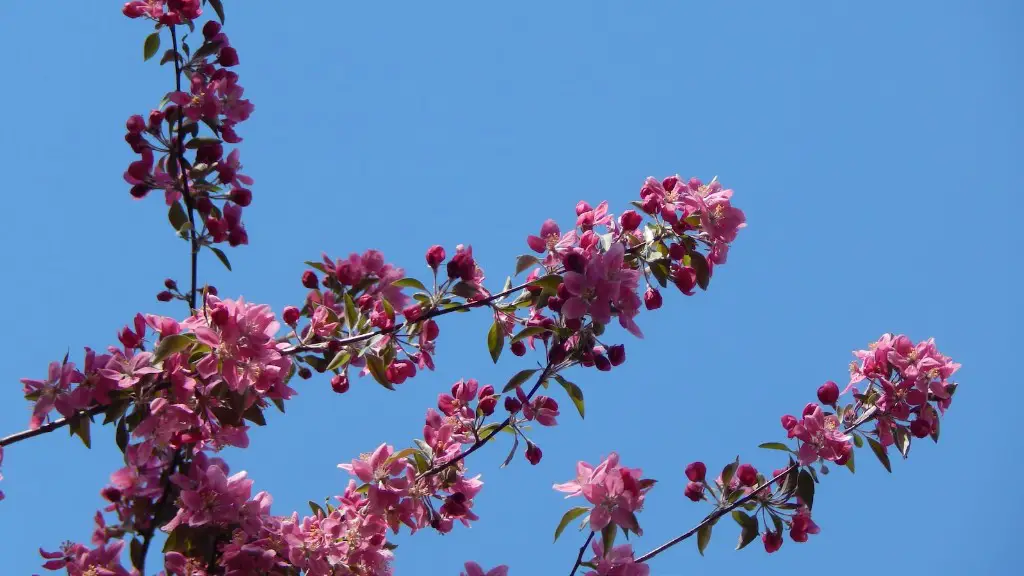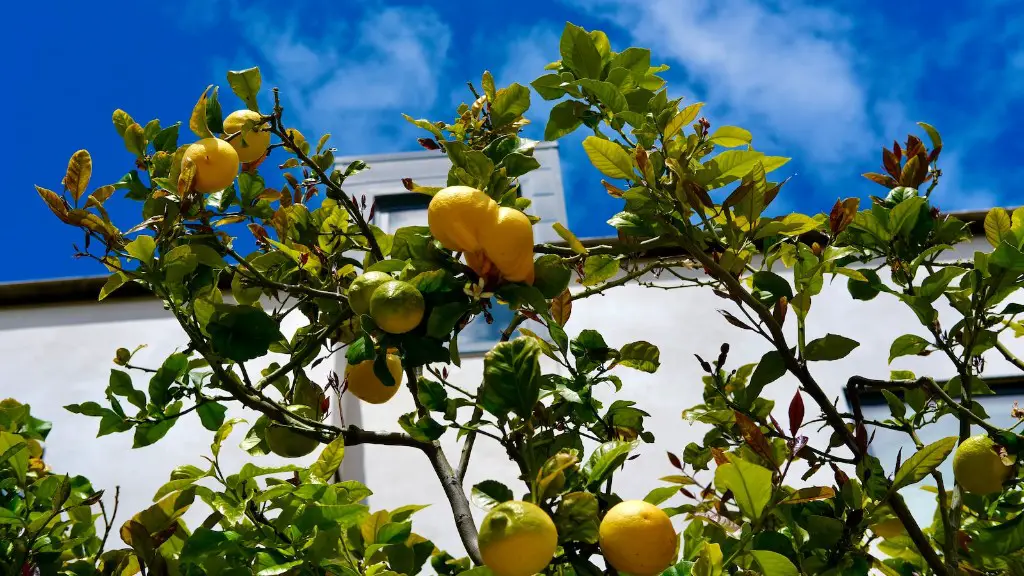Lemon trees can be a great addition to your indoor or outdoor garden and they are often chosen for their fragrant flowers and edible fruits. However, many gardeners experience disappointment when their lemon tree fails to produce fruit. There are various factors that could contribute to a lemon tree not producing fruit, and understanding what these are can help gardeners identify and address the underlying issue.
The first, and perhaps most obvious issue, is that the tree might not be receiving enough sunlight. Lemon trees need at least 6-8 hours of direct sunlight per day to thrive. Additionally, the ideal temperature for a lemon tree is between 65 and 70 degrees Fahrenheit, so be sure to keep your lemon tree in a suitable setting.
Another important factor is the tree’s soil. Lemon trees prefer slightly acidic soil with a pH level between 5.5 and 6.5. If the soil isn’t fertile enough and doesn’t receive the appropriate nutrients, your lemon tree won’t produce fruit. Furthermore, any sign of infection or disease may also result in a lack of fruit production. This can usually be spotted by observing any yellowing leaves or dry branches.
Finally, a lemon tree may not be producing fruit simply because it is too young. Most lemon trees often don’t flower and bear fruit until they reach three to five years of age. If your lemon tree is still young, it may just need more time.
Nutrient Deficiencies
Nutrient deficiencies can also inhibit a lemon tree from producing fruit. Fruit trees rely on 16 essential elements for their growth and development, including nitrogen, phosphorus, potassium, calcium, and magnesium. If any of these nutrients are deficient, it can both impede flower formation and reduce the tree’s overall vigor.
Gardeners should ensure their lemon tree is fertilized at least twice each year, once in the spring and once in the summer. This will help make sure the tree is receiving the essential nutrients it needs to grow and thrive. Additionally, carefully pruning the lemon tree can help maximize air and light flow, aiding in the formation of healthy flowers and fruit.
Overwatering or underwatering can also cause nutrient deficiencies. Lemon trees need to be watered frequently but the soil should be well-drained, otherwise the tree’s roots can become waterlogged. Any excess or residual water can dilute the soil’s nutrients, making them less available to the tree.
Gardeners should be sure to check the moisture levels of their soil regularly, so they can make sure their lemon tree is getting the right amount of water. If the soil is dry to the touch, that likely means the tree needs more water.
General Gardening Practices
Apart from the essential nutrients the lemon tree needs, there are a few other basic practices which gardeners should follow in order to encourage proper fruit production. First, gardeners should be sure to selectively thin out any unripe lemons so the tree can put more energy into ripening its remaining fruit.
Gardeners should also remove any flowers that bloom off-season, as fruit set typically occurs during specific times of the year. Furthermore, thinning out branches and removing dead or damaged limbs can make sure the necessary light and air are reaching the developing fruits.
In addition, gardeners should check the leaves of their lemon tree to check for pest infestations, as pest infestations can interfere with the tree’s ability to produce fruit. Further, gardeners should inspect their lemon trees regularly to check for any blossoms that are missing stamens or pistils, as these flowers will not result in viable fruit.
Lastly, gardeners should be sure to clean up the area around their lemon tree, as any weeds can steal water and essential nutrients from the soil, hindering fruit production.
Variety-Specific Factors
Certain varieties of lemon trees will undergo periods of dormancy, when they attempt to “rest” and produce considerably less fruit. During these times, there is not much that can be done to encourage fruit production, and gardeners should focus on keeping their tree healthy instead.
A few citrus tree varieties, such as Meyer lemons, are generally self-pollinating, meaning gardeners don’t need to worry about having multiple trees in order for their lemon tree to produce fruit. However, other varieties, such as Valencia or Eureka lemons, require multiple trees to pollinate each other in order to produce fruit. So, without multiple trees in the same vicinity, gardeners may not be able to successfully produce fruit from those varieties.
Finally, some lemon trees will drop their leaves and put all their energy into fruit production. This can be a sign that the tree is not getting the adequate sunlight or nutrients it needs, so be sure to monitor your lemon tree and address any underlying issues.
Fruit Aging
Another potential cause of a lemon tree not producing fruit can be the aging of its fruit. If a lemon develops too slowly or is left on the tree too long, it can over-ripen and fall off the tree before the gardener has the opportunity to pick it. Limiting the number of flowers or lemons the tree develops at any one time and removing the fruits shortly after they ripen can help make sure the lemon tree produces fruit.
It can also be beneficial for gardeners to pick the fruit early, as ripe lemons contain more sugar than those that are picked earlier. When the lemon begins to change color from light green to yellow, it is most likely ripe and ready to be consumed.
Gardeners can also use their lemon tree’s leaves to identify fruit ripeness. As the fruits ripen, the leaves near them will turn yellow and drop, which is a sign that it is time to harvest. Additionally, the lemons should be firm to the touch and shrivel slightly when picked off the tree.
Environmental Factors
Finally, environmental factors outside of the gardener’s control can contribute to a lemon tree not producing fruit. Weather conditions can play a key role in the production of fruit, particularly concerning temperatures that are either too high or too low.
Additionally, lemon trees can be affected by freezes, which will often damage the immature fruits still on the tree. When temperatures drop to 32 degrees Fahrenheit or lower, the tree’s fruits will usually die, and the tree will have to start forming flowers again in the spring.
Furthermore, decreased humidity can also cause damage to the lemon tree’s blossoms, which will often malfunction and retract if the humidity level drops too low. Consequently, this can also contribute to a lack of fruit production.
Harsh winds can produce another issue; they can dry out the flowers and cause them to die, resulting in a lack of fruit production. Any wind gusts that exceed 15 miles per hour have the potential to cause this kind of damage.
Finally, fluctuations in water availability can also create a hindrance to fruit production. Lemon trees will typically enter a period of dormancy when their leaves are falling off and no longer producing flowers and fruit. This is often caused by either a lack of water or the presence of too much water in the soil.





